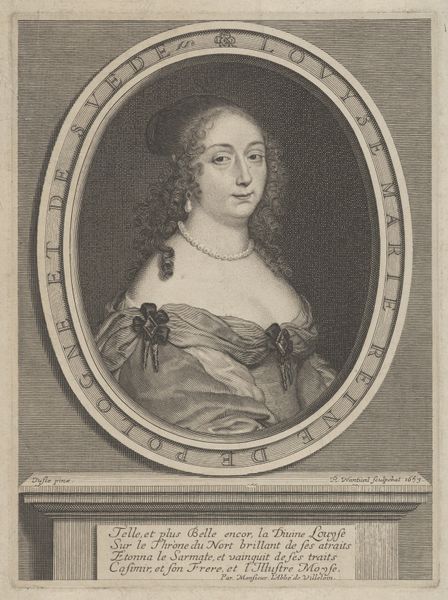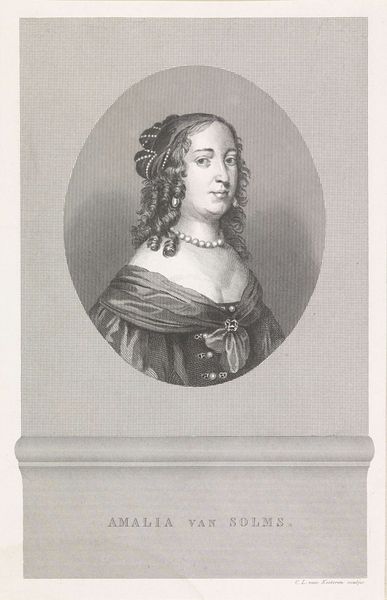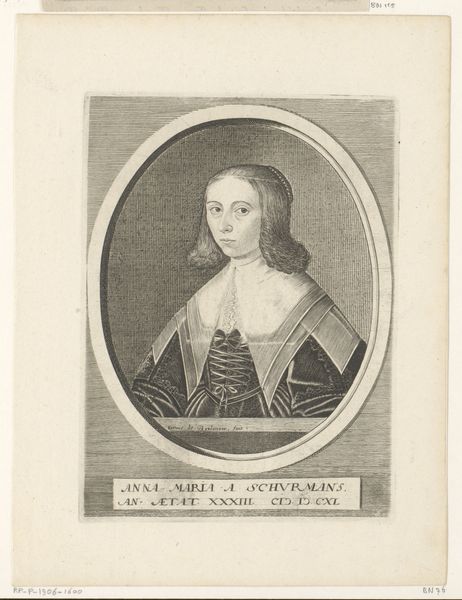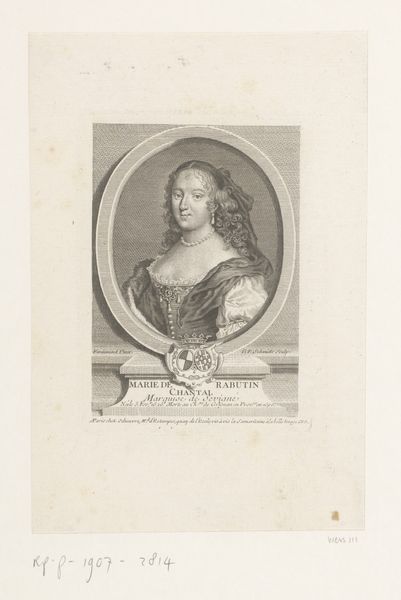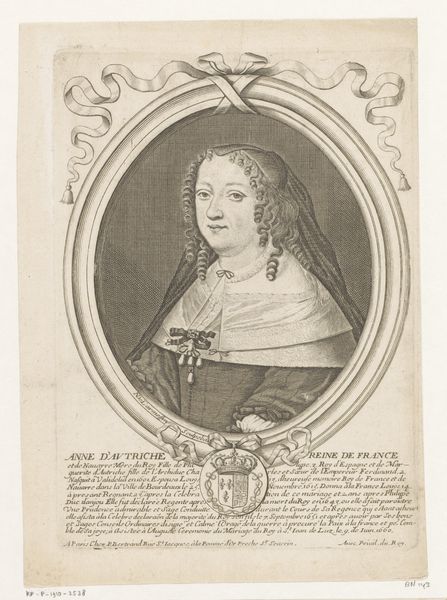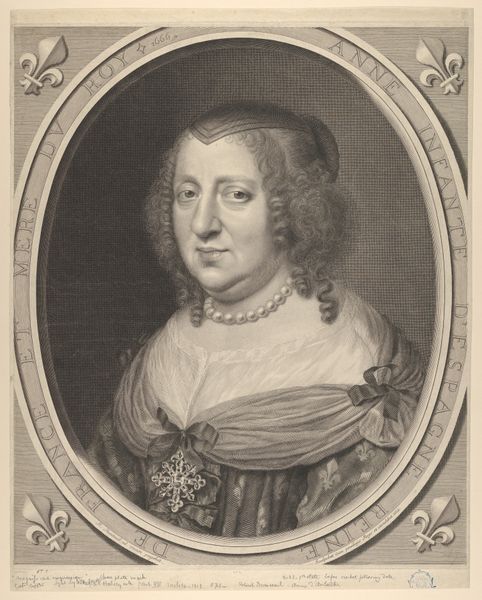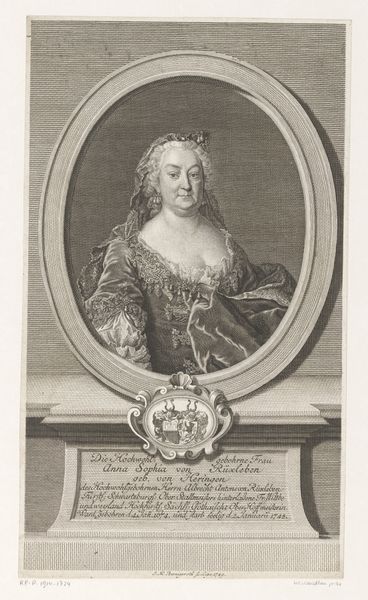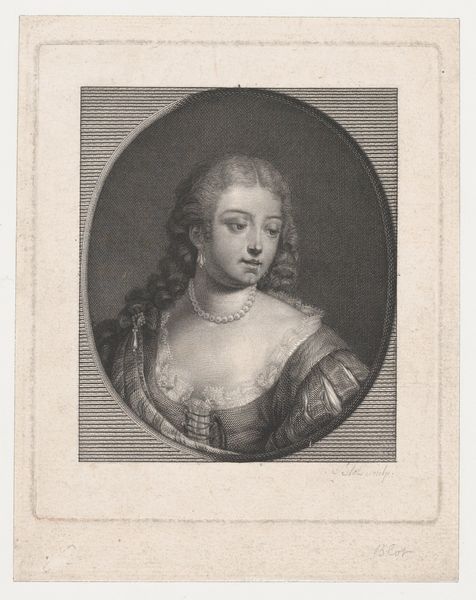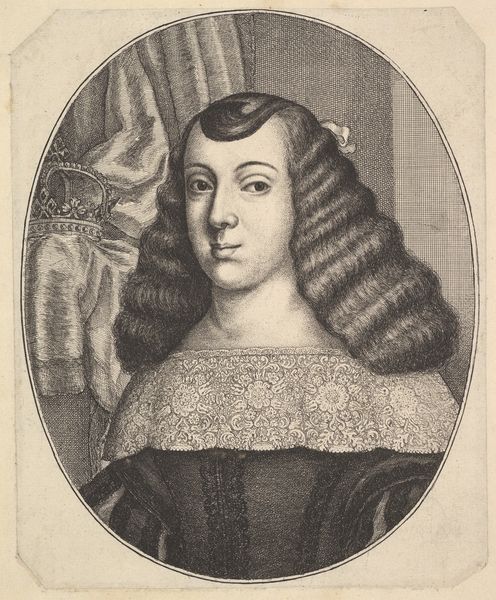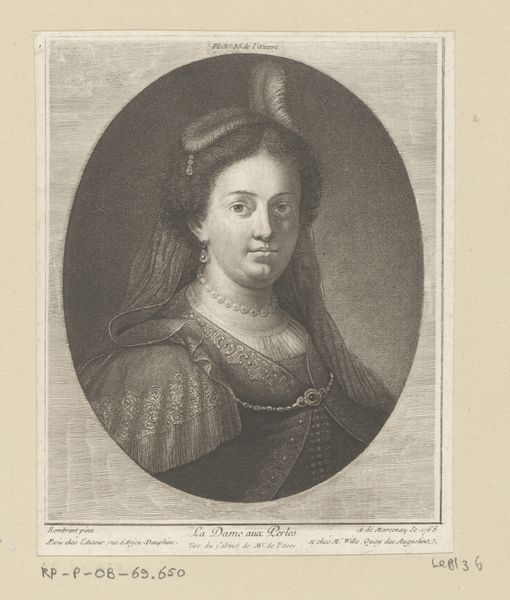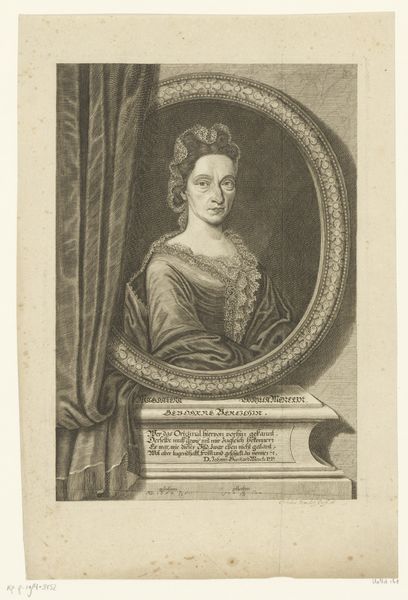
etching, engraving
#
portrait
#
baroque
#
etching
#
old engraving style
#
portrait reference
#
history-painting
#
engraving
Dimensions: height 201 mm, width 132 mm
Copyright: Rijks Museum: Open Domain
Curator: This is a portrait of Françoise de Lorraine, made between 1633 and 1676 by Jean Frosne. It is crafted with etching and engraving. Editor: The fine lines creating light and shadow really strike me. The sheer detail achieved through the engraving process is impressive, especially considering it's a reproduction. What catches your eye? Curator: For me, it's the means of production here that are most telling. Consider the labour involved in creating this matrix. An engraving like this would have been produced in multiples, a direct appeal to wider audiences. Do you think that shifts its value, when it’s intended for circulation rather than unique display? Editor: That’s interesting – definitely makes it more accessible. How would this differ, materially and in terms of labor, from an original painted portrait? Curator: Significantly! A painted portrait would've involved direct interaction between the artist and subject, precious pigments, skilled labour concentrated on a single outcome, but engraving enables mass distribution. Think about the socio-economic implications of widespread access to images, it creates both opportunities and obstacles for artists. It opens art consumption beyond the elite. Editor: It's also like it captures a specific moment in how the art was created as well as depicting the Duchess. Something about seeing the texture created through the printing process brings an immediate intimacy in a way. I learned a lot from this approach! Curator: Indeed. Looking at art through its materials helps to unveil the processes, economies, and power dynamics inherent in its making and distribution. A single portrait tells a broad story, it really changed my outlook!
Comments
No comments
Be the first to comment and join the conversation on the ultimate creative platform.
